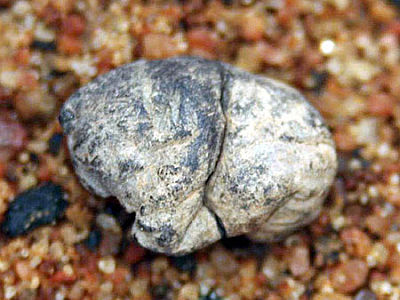How did the ancient Egyptians drill holes into hard granite?

In today's technologically advanced world, it is not difficult to drill holes in hard materials such as
Expedition Magazine | Ancient Egyptian Stone-Drilling
https://www.penn.museum/sites/expedition/ancient-egyptian-stone-drilling/
In 1883, Egyptologists A. Lucas and Flinders Petrie discussed the method by which tubular granite cores excavated from ancient Egyptian ruins were made: Lucas suggested that they had been polished with quartz sand, while Petrie suggested that they had been polished with emery .

To prove his prediction, Lucas collected numerous references, but found that polishing with quartz sand could not form the concentric lines on the core. Petrie also initially speculated that diamonds and
The debate between Lucas and Petrie continued to go nowhere, but in 1983, a team of researchers including John Gvinet and Leonard Gorelick of the Penn Museum conducted a scientific analysis of a sarcophagus hole excavated in ancient Egypt.

The research team first took a silicon mold of the hole in the sarcophagus.

When they examined the surface of the mold, they found that the spacing between the concentric lines became increasingly narrower, which the team attributed to the abrasive particles becoming finer as the holes were drilled.

The team then examined the holes in the sarcophagus with a scanning electron microscope, which revealed that polishing with quartz sand did not reveal the concentric lines on the granite surface.

They also found that while dry emery did not produce concentric lines, polishing with a slurry moistened with a viscous lubricant and olive oil produced concentric lines and also had the advantage of drilling holes more quickly than polishing with water.

In addition to emery, the team also conducted experiments with diamond and corundum, and reported that while diamond showed concentric lines even when dry, corundum only showed concentric cutting lines when wet.

Petrie concluded that diamonds were not used in ancient Egypt because of their rarity, but the research team stated, 'Our study is unable to determine which abrasives, emery, diamond, or corundum, were used to drill holes in granite in ancient Egypt,' refuting Petrie's claim that diamonds were not used to polish granite.
The team's discovery is important for the study of ancient lapidary techniques, and has been applied to other stones. In the 1990s, Egyptologist Mark Renner, stonemason Roger Hopkins, and ancient tool expert Dennis Stocks conducted research into how ancient Egyptian obelisks were constructed, and a YouTube video was posted showing a recreation of the ancient Egyptian drilling technique.
Making Egyptian Drill Holes: Lost Ancient High Technology - YouTube
Related Posts:
in Science, Posted by log1r_ut







